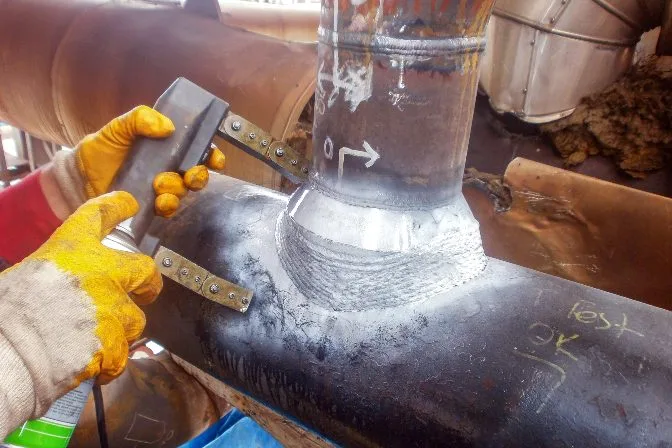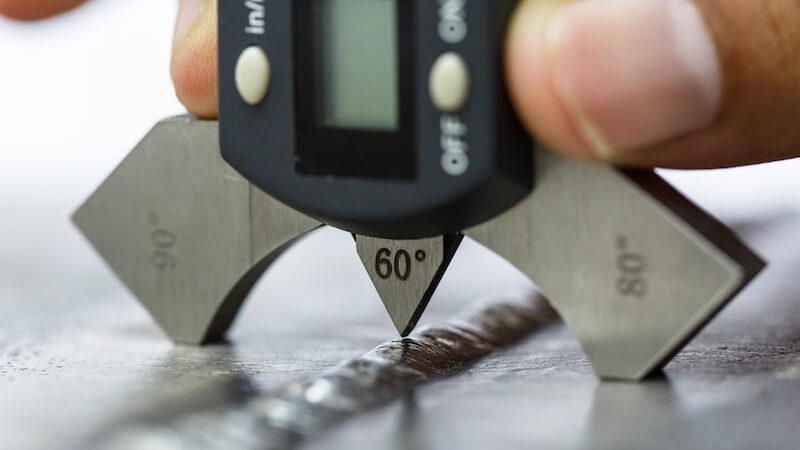Reputable Houston Welding Inspection for Conformity and Security Specifications
Wiki Article
The Important Duty of Welding Assessment: Understanding the Treatments, Tools, and Specification That Govern Quality Assessment in Welding Procedures
Welding assessment is an important component of quality control in welding procedures, making certain the architectural integrity and safety of bonded settings up. By using a variety of procedures, from pre-weld assessments to sophisticated non-destructive testing strategies, examiners systematically review weld top quality against stringent sector standards. The tools used in these procedures is critical for recognizing potential imperfections that might endanger efficiency. Understanding the interplay between assessment techniques and governing compliance raises essential questions concerning the difficulties faced in maintaining these essential methods. What ramifications do these variables have on the overall efficiency of welding operations?Relevance of Welding Evaluation
Welding assessment is vital in making certain the integrity and safety of welded frameworks, as it often serves as the final checkpoint before components are taken into service. The value of this inspection depends on its capacity to determine potential problems that might endanger the efficiency and durability of welded joints. Given the high stakes entailed, especially in markets such as building, aerospace, and automobile, extensive assessment procedures are vital.Welding problems can emerge from various factors, including inappropriate techniques, poor equipment, or inappropriate products. Failing to identify these issues can cause tragic repercussions, consisting of architectural failures, which might cause injury, loss of life, and substantial monetary responsibilities. Welding evaluation supplies an organized approach to assess the high quality of welds, making sure conformity with sector standards and regulatory demands.
Furthermore, reliable welding assessment adds to improving total performance by decreasing rework and making certain that projects continue to be on timetable. By cultivating a culture of top quality assurance, companies can likewise improve their reputation and client depend on. Essentially, the value of welding evaluation can not be overemphasized, as it plays a crucial duty in protecting both human lives and financial investments in facilities.
Key Examination Procedures
An extensive strategy to examination procedures is essential for ensuring the top quality and dependability of bonded joints. Efficient examination starts with pre-weld evaluations, that include examining welding specifications, product residential properties, and joint designs to determine potential difficulties. This preparation phase establishes a standard for top quality expectations.
During the welding procedure, in-process assessments are critical. Inspectors check criteria such as heat input, traveling rate, and electrode angle to make sure compliance with well established criteria. Visual assessments are the initial line of defense, making it possible for the identification of surface flaws, such as fractures, porosity, or incomplete combination.
Post-weld inspections include advanced strategies to evaluate the stability of the joint. This may consist of non-destructive screening (NDT) methods such as ultrasonic testing, radiographic testing, or magnetic bit screening. These techniques provide deeper insights right into the inner framework of the weld, revealing potential flaws that might not be noticeable externally.
Documents plays an essential role throughout the evaluation process. In-depth records of inspections, consisting of searchings for and rehabilitative activities, make certain traceability and accountability, eventually adding to constant enhancement in welding practices and total quality control.
Crucial Tools for Examination
Efficient assessment depends on making use of specific devices developed to examine the high quality and stability of welded joints. Key tools in this process consist of visual inspection devices, such as amplifying borescopes and glasses, which enable assessors to recognize surface area flaws and abnormalities. Additionally, ultrasonic screening (UT) tools plays a vital function by utilizing high-frequency acoustic waves to detect interior imperfections within welds, making certain that concealed weak points are identified before they result in failure.Radiographic testing (RT) is another necessary technique, utilizing X-rays or gamma rays to create pictures of the welds, disclosing interior issues that might not show up through other assessment methods - Houston Welding Inspection. Magnetic particle screening (MT) is used for ferromagnetic products, permitting examiners to find surface area and near-surface defects by applying magnetic areas and great particles
Dye penetrant testing (PT) is also substantial, entailing the application of a fluorescent dye to disclose surface fractures and gaps. Each of these tools and methods adds to a detailed evaluation method, guaranteeing that welded frameworks satisfy the required top quality criteria and stay secure for use in their corresponding applications.

Market Criteria and Rules
Quality control in welding evaluation is considerably affected by market requirements and policies that govern methods and make certain security. These standards work as criteria for high quality, detailing the needed methods for evaluation, paperwork, and screening. Key organizations such as the American Welding Culture (AWS), the American Culture of Mechanical Engineers (ASME), and the International Learn More Here Organization for Standardization (ISO) establish standards that welding specialists must adhere to throughout the assessment procedure.Conformity with these standards is not only an issue of regulative commitment but likewise an important part of threat management in welding operations. They include different facets, consisting of product selection, welding strategies, and qualifications of personnel. As an example, AWS D1.1 describes structural welding requirements, while ISO 3834 specifies high quality demands for welding procedures.
In addition, sector policies dictate the needed certifications for welding examiners, necessitating accreditations that verify their know-how. This alignment with standards guarantees that examinations are carried out consistently and precisely, ultimately protecting the honesty of bonded structures. Adhering to these sector criteria and guidelines is paramount in promoting functional performance and preserving public count on welding practices.
Obstacles in Welding Evaluation


Welding assessment deals with countless challenges that can influence the integrity and safety and security of bonded structures. One considerable obstacle is the intricacy of the welding processes themselves, which can differ substantially relying on materials, joint setups, and environmental review conditions. This variability necessitates a comprehensive understanding of varied examination methods and their suitable applications.
One more challenge depends on the progressing nature of welding technology. As brand-new materials and methods are presented, assessors have to continuously update their expertise and skills to properly assess the high quality of welds. Additionally, the physical access of weld locations can hinder examination efforts, particularly in confined or high-risk settings.
Furthermore, human factors play an important role in welding assessment. Houston Welding Inspection. The subjective nature of visual evaluations can result in disparities, as different assessors may translate the exact same weld in a different way. This underscores the value of standard training and accreditation for inspectors to ensure a consistent Visit This Link strategy to top quality assessment
Lastly, the integration of innovative modern technologies, such as automated examinations and fabricated intelligence, presents both possibilities and obstacles. While these modern technologies can improve accuracy and performance, they likewise require substantial financial investment and experience to apply effectively. Addressing these difficulties is crucial for maintaining the integrity of bonded structures.
Conclusion
Welding examination is crucial for making sure the safety and honesty of welded frameworks. With extensive assessment treatments, the use of specific devices, and adherence to recognized sector standards, the high quality of welding procedures can be systematically assessed. Difficulties continue in the inspection process, yet the execution of effective approaches can minimize risks connected with architectural failings. Eventually, a durable welding evaluation framework not only assures compliance with policies yet also enhances general functional performance and dependability.Welding evaluation is an essential element of high quality assurance in welding procedures, making certain the structural stability and safety and security of welded settings up.Welding evaluation is critical in ensuring the stability and security of bonded structures, as it often offers as the last checkpoint prior to components are put right into service. Welding assessment gives a methodical method to assess the quality of welds, making certain compliance with sector requirements and governing needs.
Quality guarantee in welding assessment is dramatically affected by market criteria and laws that regulate techniques and make sure security. Secret companies such as the American Welding Society (AWS), the American Culture of Mechanical Designers (ASME), and the International Company for Standardization (ISO) develop standards that welding specialists must adhere to throughout the examination process.
Report this wiki page